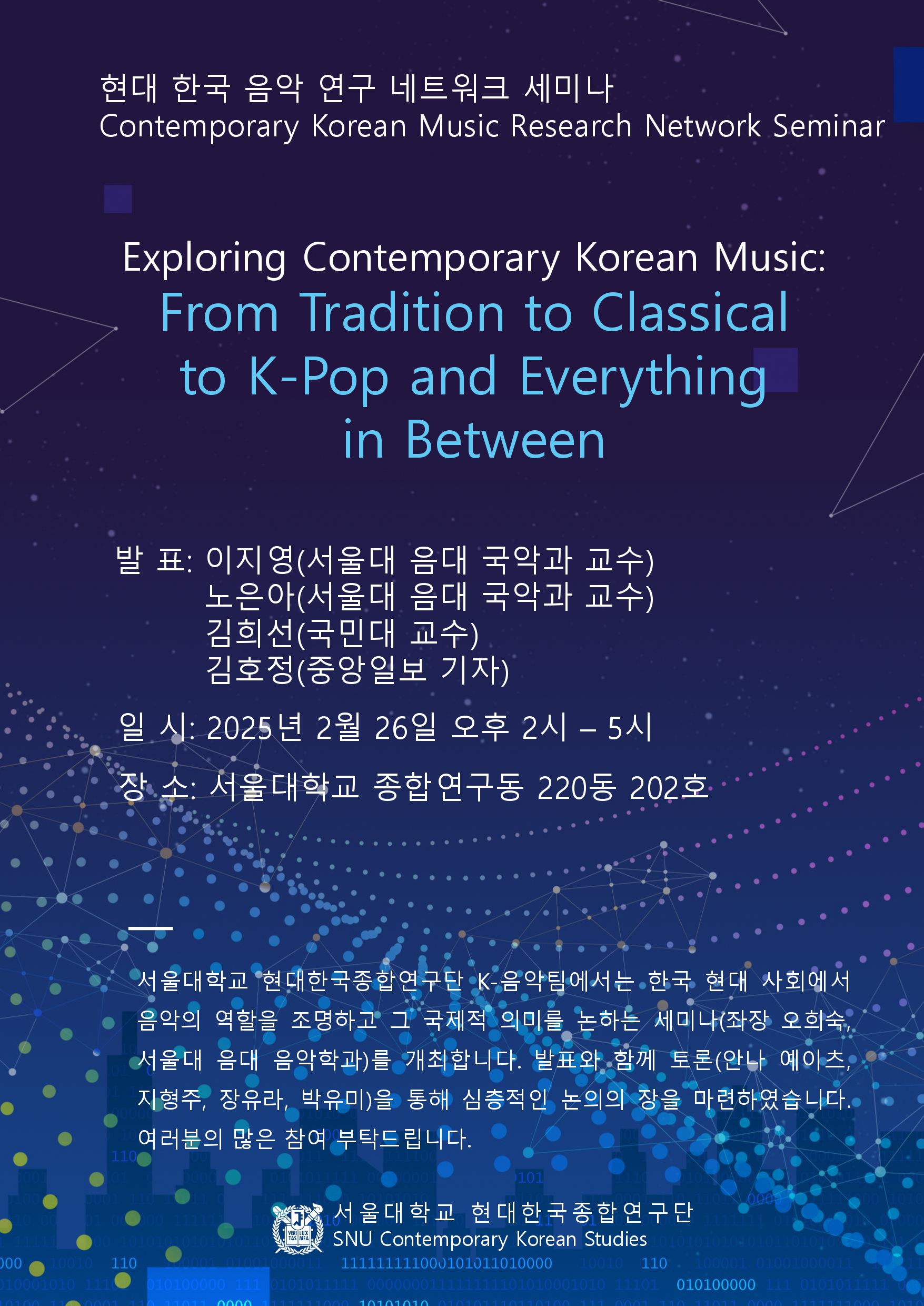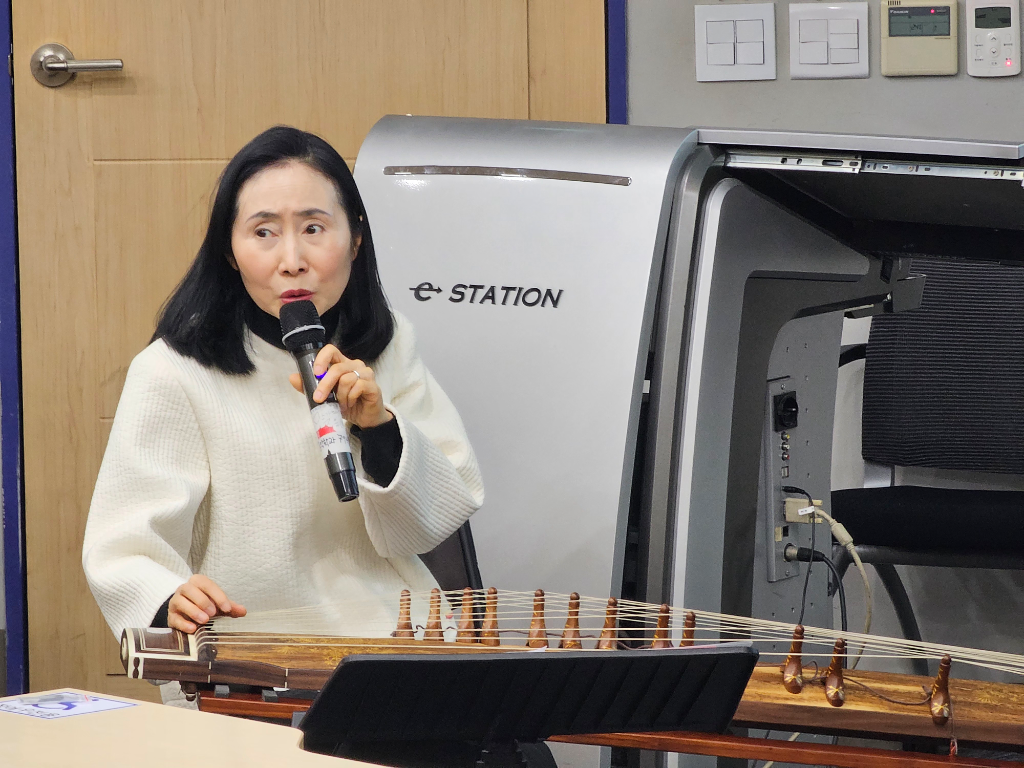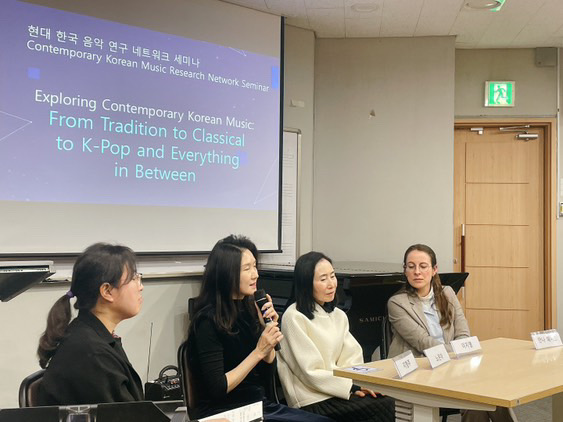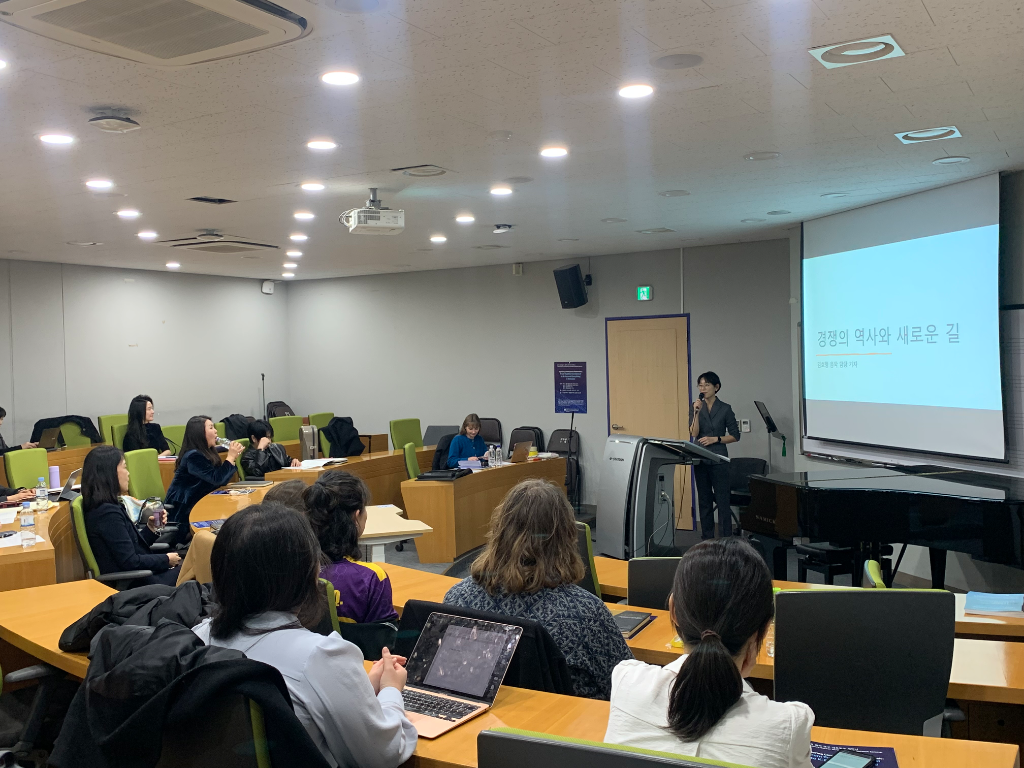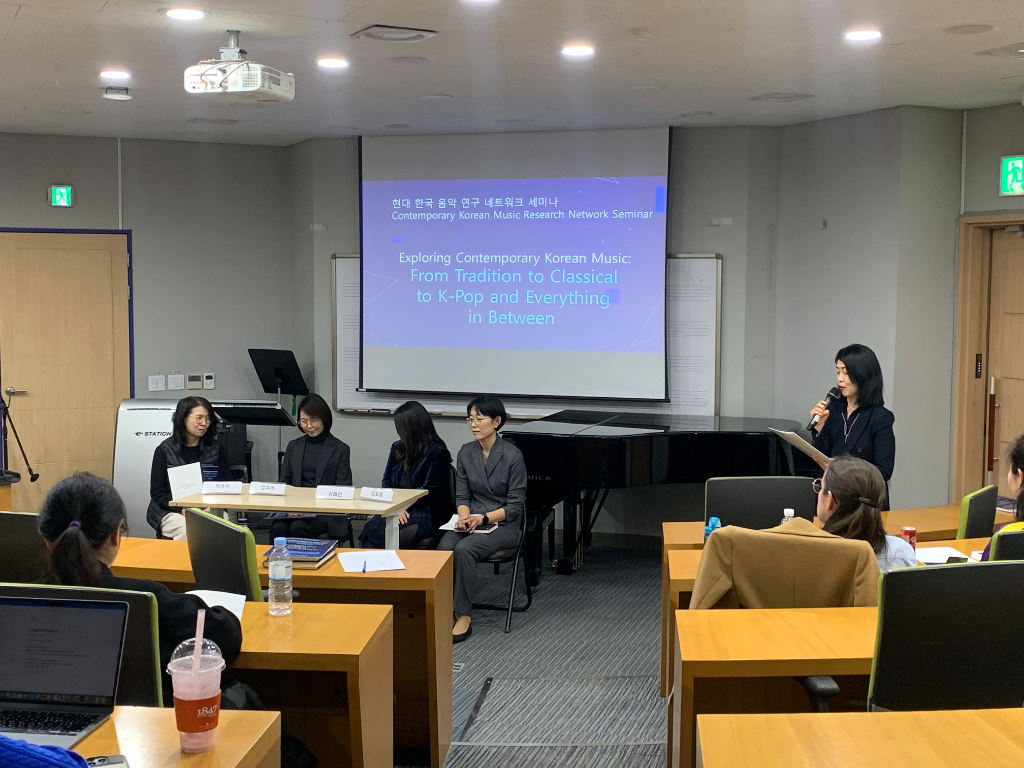On February 26, 2025, from 2:00 to 5:00 PM, the "Contemporary Korean Music Research Network" seminar was held under the theme “Exploring Contemporary Korean Music: From Tradition to Classical to K-Pop and Everything in Between”.
Professors Ji-Young Lee and Eun-Ah Noh presented on the historical traditions and contemporary significance of traditional Korean music. Each presenter shared deep knowledge of their respective instruments, offering not only theoretical explanations of playing techniques and instrument structures but also live demonstrations that allowed the audience to experience them directly. These performances created a stimulating environment that bridged theory and practice.
During the discussion sessions, the presenters responded to questions from other scholars and traditional music experts, fostering active dialogue. Topics included the contemporary use and significance of the gayageum and haegeum, as well as international influences. Audience members also participated, posing enthusiastic questions. This provided a meaningful opportunity to share personal insights and experiences regarding the performance practices of traditional Korean music today.
The second part of the seminar focused on academic perspectives on Korean music and its global impact. Professor Hee-Sun Kim presented historical materials on overseas performances of Korean traditional music during the Cold War era. By highlighting various factors that marked the early global expansion of Korean music, the presentation offered a fresh perspective on Korean music and vividly illustrated its international influence.
Following this, reporter Ho-Jeong Kim gave a presentation focused on the question, “Are Korean musicians highly competitive?” He discussed the activities of Korean performers who have recently achieved remarkable success in international competitions. Using statistical data and logical explanations, he presented the proportion of Korean musicians in various music contests worldwide and analyzed the underlying reasons in a detailed and precise manner.
The second discussion session featured even more diverse and individualized questions, providing an opportunity to explore the presenters’ research and findings in greater depth. Audience members actively participated as well, creating a lively forum for mutual exchange and dialogue.


